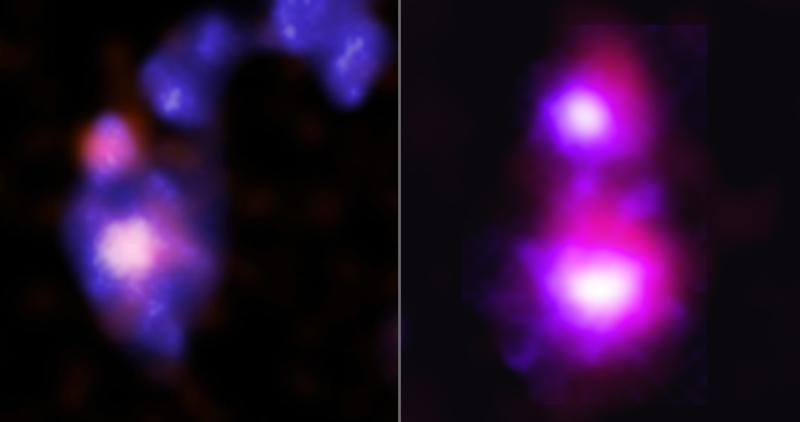 This photo taken from the website of NASA shows the two pairs of supermassive black holes in dwarf galaxies discovered by the Chandra X-ray Observatory. (PHOTO COURTESY OF NASA)
This photo taken from the website of NASA shows the two pairs of supermassive black holes in dwarf galaxies discovered by the Chandra X-ray Observatory. (PHOTO COURTESY OF NASA)
LOS ANGELES - A new study using NASA's Chandra X-ray Observatory has tracked two pairs of supermassive black holes in dwarf galaxies on collision courses, NASA said on Wednesday.
This is the first evidence for such an impending encounter, providing scientists with important information about the growth of black holes in the early universe, according to NASA.
Dwarf galaxies by definition contain stars with a total mass less than about 3 billion times that of the sun, according to NASA.
One pair is in the galaxy cluster Abell 133 located 760 million light-years from Earth. The other is in the Abell 1758S galaxy cluster, which is about 3.2 billion light-years away
Astronomers have long suspected that dwarf galaxies merge, particularly in the relatively early universe, in order to grow into the larger galaxies seen today. However, current technology cannot observe the first generation of dwarf galaxy mergers because they are extraordinarily faint at their great distances, according to NASA.
READ MORE: NASA to launch Israel's 1st space telescope in 2026
The new study overcame these challenges by implementing a systematic survey of deep Chandra X-ray observations and comparing them with infrared data from NASA's Wide Infrared Survey Explorer and optical data from the Canada-France-Hawaii Telescope.
US astronomers searched for pairs of bright X-ray sources in colliding dwarf galaxies as evidence of two black holes, and discovered two examples.
ALSO READ: NASA's satellite discovers Earth-size world
One pair is in the galaxy cluster Abell 133 located 760 million light-years from Earth. The other is in the Abell 1758S galaxy cluster, which is about 3.2 billion light-years away. Both pairs show structures that are characteristic signs of galaxy collisions, according to NASA.


